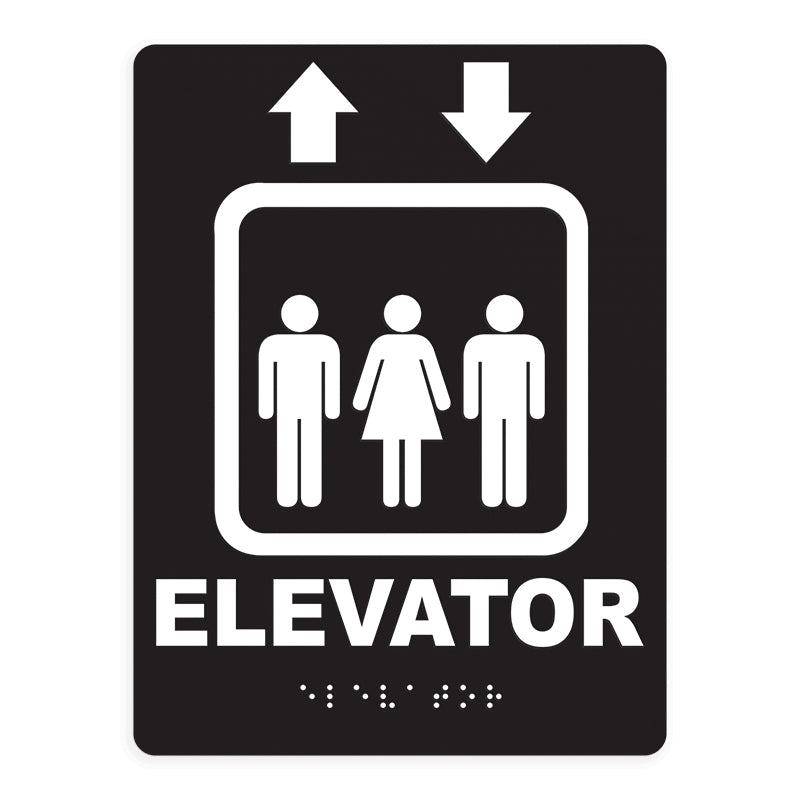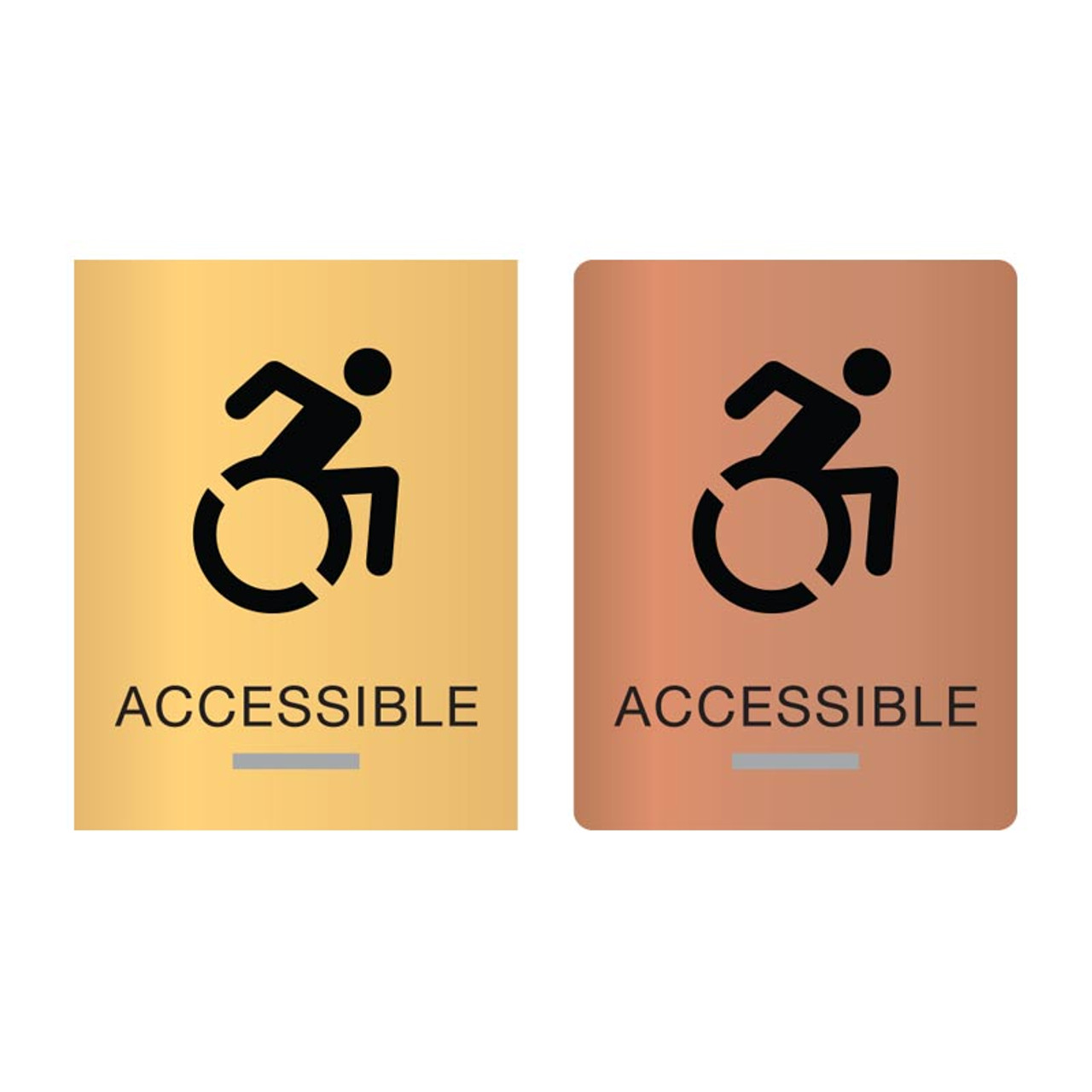ADA Signs: Vital Tools for Inclusive Atmospheres
Checking Out the Secret Functions of ADA Signs for Enhanced Access
In the realm of availability, ADA indicators serve as quiet yet powerful allies, making certain that areas are accessible and comprehensive for individuals with handicaps. By integrating Braille and responsive aspects, these indications break barriers for the visually impaired, while high-contrast shade plans and readable typefaces provide to varied aesthetic demands.
Value of ADA Conformity
Guaranteeing conformity with the Americans with Disabilities Act (ADA) is essential for fostering inclusivity and equivalent access in public spaces and work environments. The ADA, enacted in 1990, mandates that all public centers, employers, and transport services suit people with impairments, guaranteeing they delight in the same rights and chances as others. Compliance with ADA requirements not just fulfills lawful obligations but also enhances a company's reputation by demonstrating its commitment to variety and inclusivity.
Among the vital elements of ADA conformity is the execution of easily accessible signage. ADA indications are made to ensure that people with specials needs can quickly navigate via areas and buildings. These indications must comply with certain guidelines relating to size, font, color contrast, and positioning to assure presence and readability for all. Effectively carried out ADA signage helps eliminate barriers that people with impairments typically encounter, therefore advertising their self-reliance and self-confidence (ADA Signs).
Furthermore, sticking to ADA policies can mitigate the risk of possible fines and legal repercussions. Organizations that fail to abide by ADA guidelines might deal with claims or fines, which can be both monetarily difficult and harmful to their public picture. Therefore, ADA conformity is integral to promoting an equitable atmosphere for every person.
Braille and Tactile Components
The unification of Braille and responsive components right into ADA signs symbolizes the concepts of access and inclusivity. These features are essential for individuals that are visually damaged or blind, allowing them to browse public spaces with better self-reliance and confidence. Braille, a tactile writing system, is vital in supplying composed details in a style that can be quickly perceived via touch. It is typically positioned beneath the equivalent message on signs to ensure that people can access the details without visual help.
Tactile components extend beyond Braille and consist of elevated symbols and personalities. These parts are designed to be discernible by touch, permitting people to determine space numbers, toilets, exits, and various other important areas. The ADA sets specific guidelines concerning the size, spacing, and placement of these tactile aspects to optimize readability and make sure consistency across various environments.

High-Contrast Shade Systems
High-contrast color pattern play a pivotal duty in improving the exposure and readability of ADA signs for people with visual disabilities. These plans are crucial as they optimize the difference in light reflectance between text and background, making certain that indicators are easily discernible, also from a distance. The Americans with Disabilities Act (ADA) mandates using particular color contrasts to fit those with limited vision, making it a vital aspect of compliance.
The effectiveness of high-contrast colors hinges on their ability to attract attention in different lighting problems, including dimly lit environments and locations with glare. Generally, dark text on a light background or light text on a dark background is used to accomplish optimal contrast. For example, black text on a white or yellow history offers a raw aesthetic distinction that aids in quick acknowledgment and understanding.

Legible Fonts and Text Dimension
When thinking about the style of ADA signs, the selection of clear official site typefaces and proper text size can not be overemphasized. These aspects are critical for ensuring that indications are obtainable to people with aesthetic problems. The Americans with Disabilities Act (ADA) mandates that fonts have to be not italic and sans-serif, oblique, manuscript, very attractive, or of uncommon type. These demands help guarantee that the text is conveniently legible from a distance and that the personalities are appreciable to diverse audiences.
According to ADA guidelines, the minimum text height must be 5/8 inch, and it ought to increase proportionally with seeing distance. Uniformity in message size contributes to a cohesive visual experience, helping individuals in browsing atmospheres effectively.
In addition, spacing in between lines and letters is indispensable to clarity. Sufficient spacing prevents personalities from appearing crowded, enhancing readability. By adhering to these requirements, developers can substantially improve ease of access, making certain that signage serves its intended function for all individuals, despite visit this website their visual capacities.
Effective Placement Methods
Strategic placement of ADA signs is necessary for taking full advantage of access and making certain compliance with legal criteria. ADA guidelines state that indicators need to be mounted at an elevation between 48 to 60 inches from the ground to guarantee they are within the line of sight for both standing and seated individuals.
In addition, indications should be put Website adjacent to the latch side of doors to allow simple recognition prior to access. Uniformity in indicator placement throughout a center enhances predictability, minimizing confusion and improving total individual experience.

Verdict
ADA indications play a crucial function in advertising ease of access by integrating attributes that resolve the needs of people with disabilities. Including Braille and tactile aspects makes sure crucial info comes to the visually damaged, while high-contrast color pattern and understandable sans-serif typefaces improve presence across numerous lights conditions. Reliable positioning strategies, such as ideal mounting elevations and tactical areas, further promote navigating. These aspects jointly foster an inclusive atmosphere, highlighting the significance of ADA conformity in making certain equivalent gain access to for all.
In the world of access, ADA indicators serve as quiet yet powerful allies, making sure that spaces are accessible and comprehensive for individuals with specials needs. The ADA, established in 1990, mandates that all public centers, companies, and transportation services fit individuals with impairments, guaranteeing they take pleasure in the very same rights and possibilities as others. ADA Signs. ADA signs are designed to make certain that individuals with specials needs can quickly navigate with structures and areas. ADA guidelines specify that indicators must be mounted at a height in between 48 to 60 inches from the ground to ensure they are within the line of sight for both standing and seated people.ADA signs play a vital duty in promoting availability by incorporating attributes that deal with the demands of people with handicaps